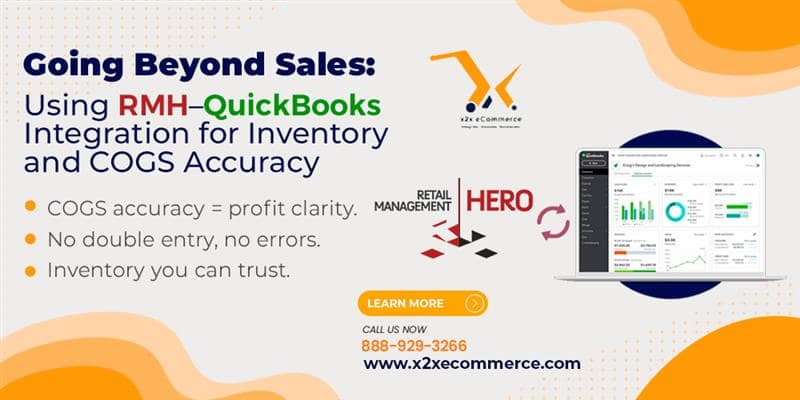
When most merchants consider integrating Retail Management Hero (RMH) with QuickBooks, the very first advantage that occurs to them is sales synchronization. While simplifying sales information is critical, real retail success hinges on delving deeper into control of inventory and accuracy of Cost of Goods Sold (COGS). These two factors tend to be the difference between profits and concealed losses for multi-location retail operations.
Why Sales Data Alone Isn’t Enough
Catching sales is just half the equation. Without inventory accuracy and accurate COGS tracking, retailers are vulnerable to:
- Overshooting profits with nowhere to find missing purchase costs
- Having too much or too little stock
- Difficulty with cash flow from inefficient inventory choices
- Discrepancies in multi-store or franchise reporting
That’s why it’s critical to zero in on inventory and COGS accuracy through RMH–QuickBooks integration for financial and operational management.
How RMH–QuickBooks Integration Simplifies Inventory & COGS
1. Real-Time Inventory Updates
Each sale, return, and adjustment in RMH updates QuickBooks inventory. This stops discrepancies between what’s on the shelf and what’s on the books enabling retailers to make better reordering decisions.
2. Proper Cost of Goods Sold (COGS) Calculation
Rather than using rough estimates, QuickBooks takes actual purchase cost information from RMH that is synched. This guarantees COGS accurately reflects the actual cost of sold items, so you can get a more accurate picture of profitability for each product, category, or store.
3. Automated Purchase-to-Sale Visibility
When you take receipt of inventory in RMH, that cost information simply transfers to QuickBooks. From purchase order to invoice to final sale, each step is captured so you always have a sense of how much you’re spending and earning.
4. Multi-Location Control
For multi-store and franchise retailers, inventory accuracy is also more important. RMH allows you to track stock by location, while QuickBooks sums up costs and sales, allowing you to quickly identify problems such as shrinkage, mispricing, or underperforming stores.
5. Improved Decision-Making through Valid Data
With synchronized sales, inventory, and costs, business owners have real profitability visibility. No longer using “gut feel,” you make decisions on pricing, promotions, supplier negotiations, and growth based on data.
The Big Payoff: Profitability with Confidence
When inventory and COGS are precise, financial statements reveal your business’s true story. Retailers can:
- Count on profit and loss (P&L) reports
- Eliminate surprises at audit or tax time
- Enhance cash flow with improved purchasing
- Maximize margins with more intelligent inventory management
Final Thoughts
Sales information is only the tip of the iceberg. With RMH–QuickBooks integration used to move beyond sales, retailers have the tools to keep inventory and COGS accurate at every location. The payoff? Increased profitability, improved operations, and the knowledge to grow your retail business in confidence, without fear of financial blind spots.





